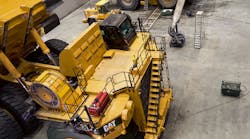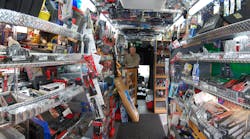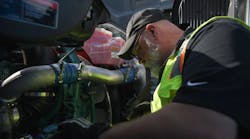Many components can and should be rebuilt. Most fleet operators, however, no longer have the capability to rebuild components in house – if they ever did. In the current marketplace, they have to use outside vendors.
I’ve spent a couple of weeks in Australia with some mining fleets. They have big, expensive trucks.
A really big CAT engine for a 400-ton haul truck costs $1,200,000. The same big CAT engine costs $750,000 rebuilt. In this instance, the decision to go with a rebuilt engine rather than replacing it with a new engine would save $450,000.
We all want to save money, but would this be a smart decision? How would we know?
The decision-drivers have to be the effective life of the component and the system reliability.
Component Rebuilders
There is little difference between a new engine and a rebuilt one if the rebuilder is competent and follows the rules for maximal rebuilds.
Here are the key criterions for selecting a major component rebuilder:
- Does the OEM certify the rebuilder?
- Does the rebuilder offer a warranty?
- Is the component updated to the latest engineering revision of the component manufacturer?
- Is the component rebuilt to OEM specifications using OEM parts?
- Can the rebuilder give you an analysis of why the component failed, and does it keep records on previous rebuilds of the same component?
- Does the rebuilder have a quality control program? Can you see the program in action when you visit?
- Does the rebuilder pick up and deliver the items to be rebuilt?
- Does the rebuilder have an adequate supply of parts and equipment to service your requirements?
- Will the rebuilder offer firm prices?
- Will the rebuilder stock your requirements on a consignment basis?
Advantages
There are a number of advantages that can come from dealing with an upright and experienced rebuilder. These include:
- Core damage is less likely with proper replacement intervals.
- Manufacturer's revisions, enhancements and improvements can be incorporated more easily.
- Rebuilds in controlled environments by specialists always are better than the same rebuilds “on the floor” by even great general technicians.
- Spare components can be made available on a scheduled basis that can minimize inventory rather than waiting for breakdowns, which are known to clump together.
- Since the component is replaced, breakdowns become infrequent, availability goes up and the “atmosphere” becomes more regular as there are fewer equipment emergencies to deal with.
Remanufactured Vehicles
Many types of machines and vehicles can be economically remanufactured. Some major fleets run captive remanufacture shops because they’ve found that the cost of the remanufactured unit is lower than a new unit by a wide margin.
The U.S. Postal Service, for example, has replaced its old Jeep mail vans with a unit manufactured by Grumman. One of the advantages of the Grumman van, in addition to its larger capacity, is an aluminum body. The USPS is figuring on a 15- to 20-year life for that body, which will be on two or three chassis.
Pepsi-Cola recommends to its bottlers that remanufacture of beverage trailers and route truck bodies usually is one-third of the cost of a new unit, and they can expect an additional five years of useful life.
During times of high capital costs, remanufacture becomes very attractive.
Joel Levitt is director of international projects for Life Cycle Engineering (www.lce.com), an organization that provides consulting, engineering, applied technology and education solutions that deliver lasting results. Previously, he was president of Springfield Resources (www.maintenancetraining.com), a management consulting firm.






